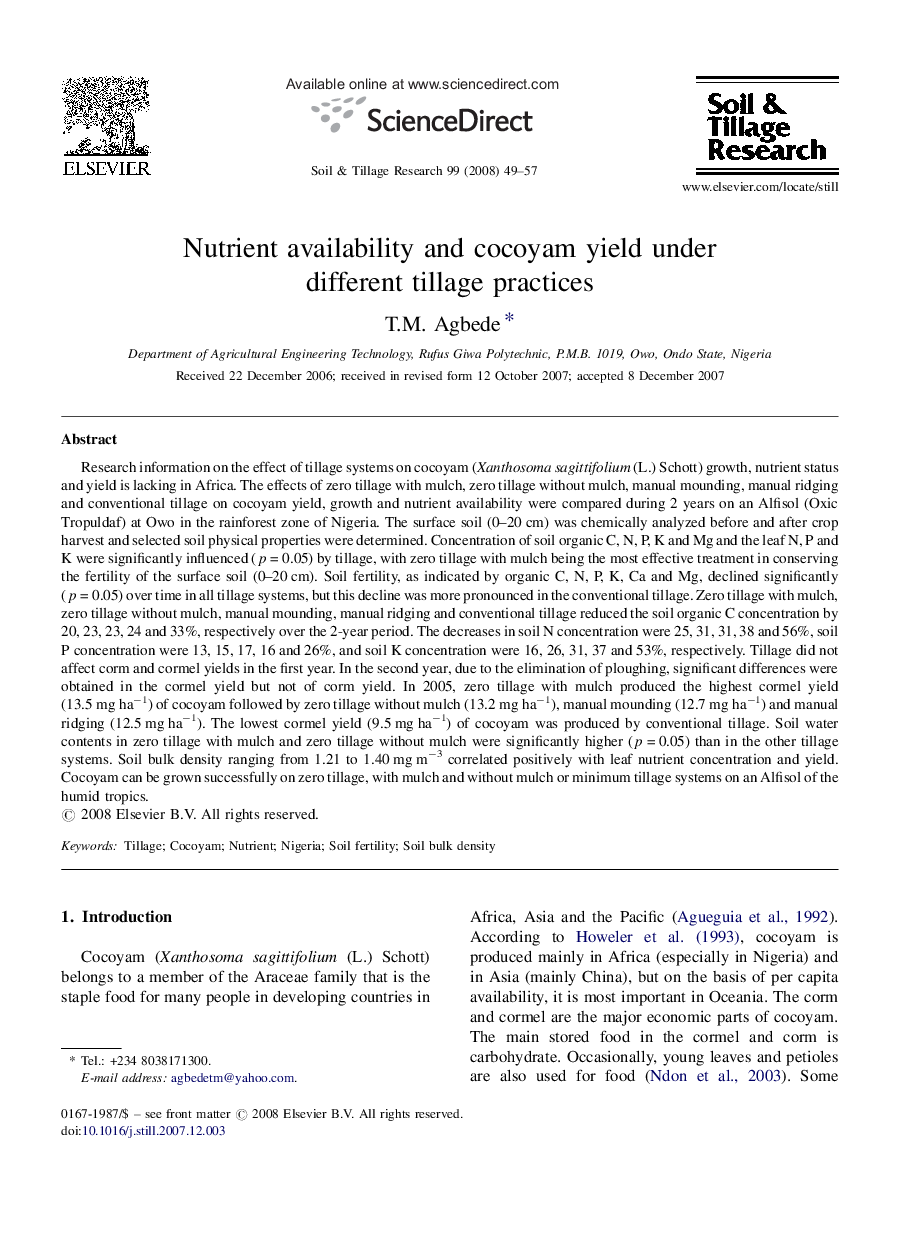| کد مقاله | کد نشریه | سال انتشار | مقاله انگلیسی | نسخه تمام متن |
|---|---|---|---|---|
| 306597 | 513104 | 2008 | 9 صفحه PDF | دانلود رایگان |

Research information on the effect of tillage systems on cocoyam (Xanthosoma sagittifolium (L.) Schott) growth, nutrient status and yield is lacking in Africa. The effects of zero tillage with mulch, zero tillage without mulch, manual mounding, manual ridging and conventional tillage on cocoyam yield, growth and nutrient availability were compared during 2 years on an Alfisol (Oxic Tropuldaf) at Owo in the rainforest zone of Nigeria. The surface soil (0–20 cm) was chemically analyzed before and after crop harvest and selected soil physical properties were determined. Concentration of soil organic C, N, P, K and Mg and the leaf N, P and K were significantly influenced (p = 0.05) by tillage, with zero tillage with mulch being the most effective treatment in conserving the fertility of the surface soil (0–20 cm). Soil fertility, as indicated by organic C, N, P, K, Ca and Mg, declined significantly (p = 0.05) over time in all tillage systems, but this decline was more pronounced in the conventional tillage. Zero tillage with mulch, zero tillage without mulch, manual mounding, manual ridging and conventional tillage reduced the soil organic C concentration by 20, 23, 23, 24 and 33%, respectively over the 2-year period. The decreases in soil N concentration were 25, 31, 31, 38 and 56%, soil P concentration were 13, 15, 17, 16 and 26%, and soil K concentration were 16, 26, 31, 37 and 53%, respectively. Tillage did not affect corm and cormel yields in the first year. In the second year, due to the elimination of ploughing, significant differences were obtained in the cormel yield but not of corm yield. In 2005, zero tillage with mulch produced the highest cormel yield (13.5 mg ha−1) of cocoyam followed by zero tillage without mulch (13.2 mg ha−1), manual mounding (12.7 mg ha−1) and manual ridging (12.5 mg ha−1). The lowest cormel yield (9.5 mg ha−1) of cocoyam was produced by conventional tillage. Soil water contents in zero tillage with mulch and zero tillage without mulch were significantly higher (p = 0.05) than in the other tillage systems. Soil bulk density ranging from 1.21 to 1.40 mg m−3 correlated positively with leaf nutrient concentration and yield. Cocoyam can be grown successfully on zero tillage, with mulch and without mulch or minimum tillage systems on an Alfisol of the humid tropics.
Journal: Soil and Tillage Research - Volume 99, Issue 1, April 2008, Pages 49–57